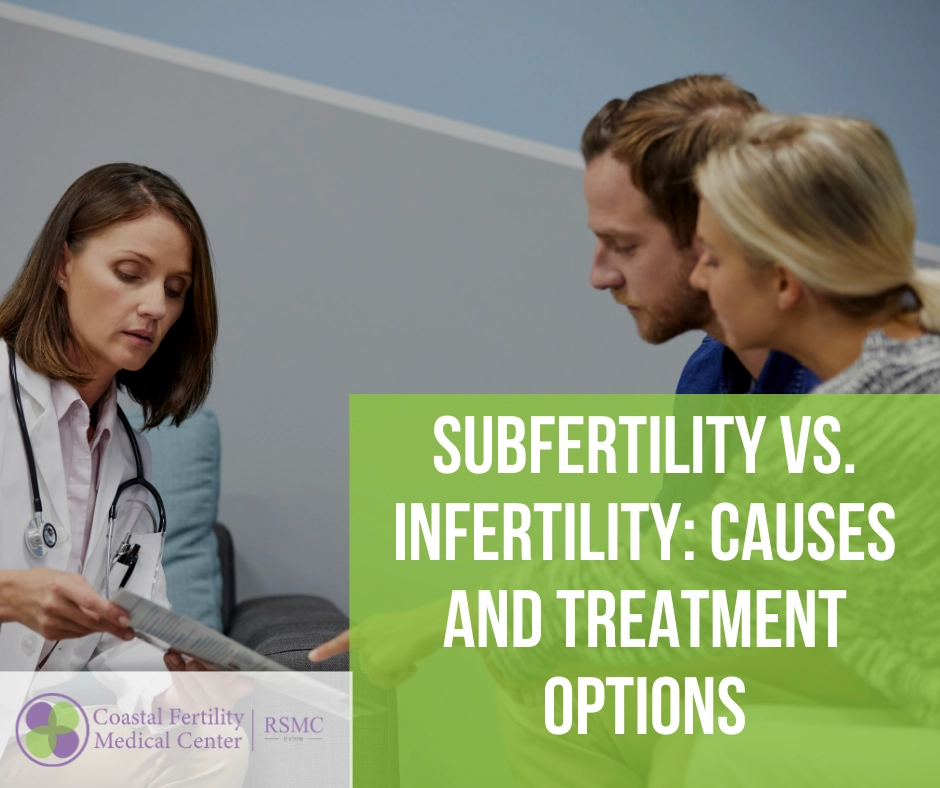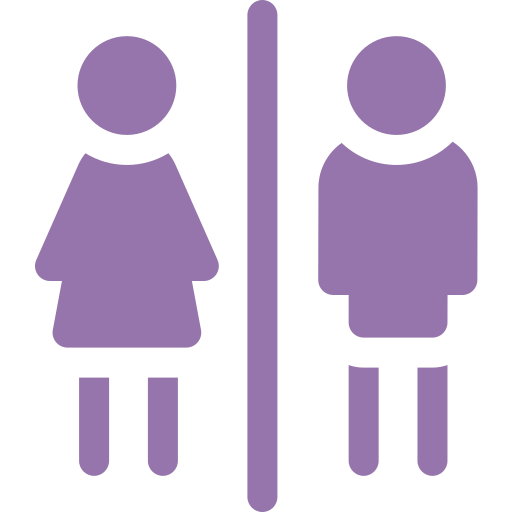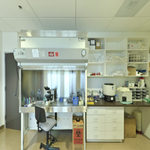About
Success
Treatment
Financial
Resources
Blog
Contact
Site Tools

Subfertility vs. Infertility: Causes and Treatment Options

Although the terms “subfertility” and “infertility” are sometimes used interchangeably, they have different meanings. Subfertility refers to a delay in getting pregnant. Infertility, on the other hand, is the inability to become pregnant after a year of trying.
In subfertility, there is still a chance of conceiving naturally, although that may take a longer time than “normal.” Subfertility implies that you, as a couple, are less fertile compared to other couples like you. It does not mean that you cannot conceive. It only indicates that conceiving may be harder, based on the measures used to evaluate your fertility. In infertility, the probability of getting pregnant without medical assistance is very slim.
Research has shown that most couples will get pregnant naturally within a year of having sex without protection.
The differences between subfertility and infertility
Couples who are described as being subfertile can still conceive without medical assistance, but it may take them a longer time than others. By contrast, those considered infertile would require medical help to conceive and have an extremely low chance of achieving that otherwise.
One more difference between the two terms is in their meanings. While infertility means you have been unable to conceive after at least one year of trying, subfertility means that it is taking a longer time than usual to conceive.
The terms “infertile” and “subfertile” should not be confused with someone considered sterile. Someone who is infertile may have a very slim chance of conceiving on their own, but a sterile person has absolutely no chance of conception without medical help.
This is where it may get confusing: by definition, a couple who have been trying to conceive for 12 months without success can be referred to as “infertile.” This is the reason you need to consult your physician if you are unable to conceive after a year (or after 6 months if you are aged 35 or above).
With that said, a lot of the couples who cannot get pregnant after one year are, in actual fact, subfertile. This means they will eventually conceive on their own – it would only take some more time. They don’t really need any complex fertility treatment.
So, how many couples are subfertile? And how many are infertile?
A study found that 47% of couples who were unable to conceive after a year and a half were indeed infertile. This means that they needed assisted reproductive technologies (ART) to get pregnant and did not conceive naturally over the course of the study. Note that none of the couples in this study had a known fertility problem.
The longer a person has been trying to conceive without success, the more their chances of conceiving naturally reduce.
A different study found that if 100 couples are trying to get pregnant….
- 70 would become pregnant after 6 months
- 20 more would conceive after 1 year
- 5 would conceive naturally within 3 years
- The remaining 5 would be highly unlikely to ever get pregnant on their own.
According to this study, couples who had been trying unsuccessfully for more than 3 years had a very slim chance of conceiving without medical intervention.
Causes of subfertility
The causes of subfertility are not different from those of infertility. Difficulty getting pregnant may be due to issues with male or female infertility or both. In certain cases, the actual cause is unclear.
1. Ovulation problems
Ovulation problems are the most common cause of infertility. If ovulation does not occur, no eggs will be released from the ovaries for fertilization.
A lot of conditions can stop ovulation from taking place. These include:
- polycystic ovary syndrome (PCOS), which may stop ovulation or result in irregular ovulation.
- diminished ovarian reserve, which is a decrease in the number of a woman’s eggs due to aging or other causes, i.e., a health condition or past ovarian surgery.
- premature ovarian insufficiency (POI, in which the ovaries stop functioning before age 40 due to a medical issue or treatment like chemotherapy.
- conditions that affect the pituitary gland and hypothalamus, interfering with the ability to synthesize hormones necessary to maintain normal ovarian function.
2. Fallopian tube blockage
Obstruction of the fallopian tubes can stop the egg from meeting with the sperm. It may be caused by:
- pelvic inflammatory disease
- endometriosis
- a history of sexually transmitted infections, like gonorrhea or chlamydia
- scar tissue caused by a past surgery, such as an ectopic pregnancy surgery
3. Uterine abnormalities
Since the baby grows in the uterus (womb), any defects or abnormalities in the womb can affect your ability to conceive. These include congenital uterine conditions (inherited) or an issue that occurs later on.
Examples of uterine conditions are:
- fibroids, which are abnormal growths on or inside the womb
- septate uterus, in which a membrane (septum) separates the womb into two sections
- double uterus in which the womb has two cavities, each having its own opening
- bicornuate uterus, in which the womb has a heart shape.
4. Issues with sperm production or function
Subfertility can also be caused by abnormal sperm production or function. This may be due to many factors and conditions, like:
- HIV
- diabetes
- gonorrhea
- chlamydia
- mumps
- varicocele (enlargement of veins within the testicles)
- cancer and cancer treatment
- genetic disorders, like Klinefelter syndrome
5. Problems with the delivery of sperm
Problems with sperm delivery can make conceiving difficult. This may be due to many things, including:
- premature ejaculation
- genetic conditions, like cystic fibrosis
- damage or injury to the testes
- structural defects, i.e., a blockage in the testicle
Possible Risk factors
Some factors can raise your chances of experiencing subfertility. Most of these risk factors are the same for both male and female subfertility. They include:
- being a woman older than 35
- being a man over the age of 40
- smoking cigarettes or marijuana
- being underweight or overweight
- excessive alcohol intake
- certain medications
- too much exposure to radiation
- excessive emotional or physical stress
- exposure to environmental toxins, like pesticides and lead
Diagnosing subfertility
A fertility expert can help figure out the cause of subfertility. A doctor will first collect the medical and sexual history of the couple. He or she will then conduct a physical exam, including a pelvic examination for women and an examination of the male sex organs.
A fertility evaluation usually involves several tests. The tests that may be done for women are:
- blood tests to determine the levels of hormones that have to with ovulation
- transvaginal ultrasound to examine the female reproductive organs
- ovarian reserve testing the know the quantity and quality of eggs
- hysterosalpingography to assess the condition of the womb and fallopian tubes
Fertility tests for men may include:
- imaging tests, i.e., a testicular ultrasound
- semen analysis
- blood tests to check hormone levels
- genetic testing to screen for congenital abnormalities that impact fertility
If the results of these basic tests are unclear or if there are severe symptoms that should be figured out, other diagnostic techniques may be conducted.
If a man has a very low sperm count or a woman has blocked fallopian tubes, then they are infertile (or possibly sterile) and will not be able to conceive without medical assistance.
Treatment for subfertility
It is still possible to get pregnant on your own if you are subfertile (not infertile). Hence, subfertility treatment is centered on lifestyle changes and learning how to improve your chances of conception.
There are various medical treatments and other options for subfertility, if necessary.
Improving your chances of conception in subfertility with lifestyle changes
Another big difference between “subfertile couples” and “infertile” couples lies in how the condition is treated. Subfertile couples do not usually need immediate or aggressive treatment, especially in the early stage.
Instead, the reproductive expert may suggest lifestyle changes and fertility awareness methods to increase your chances of conception. Below are lifestyle changes and tips for raising your chances of natural conception:
- Stay away from smoking, which may affect fertility in both men and women
- Avoid drinking alcohol
- Keep a healthy weight because being overweight or underweight can have a negative effect on fertility
- Healthy, nutritious foods are linked to improved fertility
- Doing exercise moderately, not excessively (which may lower sperm count and disrupt a woman’s menstrual cycle)
- Changing how often you have sex
- Staying away from sex lubricants that can impact sperm motility
- Use ovulation predictor kits to know the period of your menstrual cycle when you are most likely to conceive.
- Monitor your basal body temperature (BBT) to know when you are very fertile.
- Stay away from excessive heat (i.e., saunas), which can impact sperm production and motility.
- Reduce the intake of caffeine, which has been associated with subfertility in women.
- Consult a physician about your medications because some drugs are known to affect fertility.
However, if you are still unable to conceive after following these recommendations, you can explore fertility treatments, such as assisted reproductive technologies, surgery, or fertility medications.
Medical treatment
Medical treatment for subfertility or infertility depends on the cause of the condition, and it varies between men and women.
Treatment for men
Treatment options may involve treating sexual health issues or:
- medications to boost testicular function, including sperm count and quality
- surgery to repair varicocele or blockage
- sperm retrieval techniques to collect sperm in men who have difficulty ejaculating or when the ejaculated semen has no sperm.
Treatment for women
There are several treatments to help restore fertility in women. You may require just one or more of these to get pregnant.
Some of them include:
- fertility medications to control or boost fertility
- surgery to treat problems with the womb
- intrauterine insemination (IUI), which involves inserting healthy sperm into the womb.
Assisted reproductive technology (ART)
Assisted reproductive technology can be defined as any fertility procedure or treatment that involves the handling of sperm and egg.
One of the most common ART procedures is in vitro fertilization (IVF). It involves collecting eggs from a woman’s ovaries and “mixing” them with male sperm. The resulting embryos are then transferred into the womb.
Other techniques can be carried out during IVF to help raise the chances of conception, such as:
- Intracytoplasmic sperm injection (or ICSI), in which a healthy, viable sperm is directly injected into an egg
- Assisted hatching, which aids implantation by removing the outer covering of the embryo
- Donor eggs or sperm, which can be used in case there are issues with the sperm or eggs
- Gestational surrogacy, which is an excellent option for women who do not have a functional womb or those who are likely to have a high-risk pregnancy.
Adoption
Adoption is another great option to consider if you cannot get pregnant or if you are looking for other possibilities aside from infertility treatment.
Visit the websites below to know more about adoption:
Should you wait and continue trying or start fertility treatments?
You may be wondering whether you should continue trying on your own or proceed to fertility treatments. Although you can opt for fertility treatments after trying for a year without success (or after six months if you are 35 years old or above), you may want to wait and continue trying a little while longer in certain situations.
Fertility specialists have tried to figure out a formula to help physicians know when to suggest going for fertility treatment immediately and when to recommend lifestyle changes and trying a little longer.
There are no certain rules to follow. The decision to wait or pursue fertility treatment is best made with your partner and doctor based on your individual circumstances.
With that being said, there are some guidelines to consider.
You may want to continue trying a bit longer if….
- You are below 35
- You have been trying to conceive for less than 2 years
- You and your spouse have undergone basic fertility testing (including blood work, transvaginal ultrasounds, semen analysis, and an HSG to check the fallopian tubes and womb), and the results of these tests are all promising.
If you are above 35, it is advised that you begin treatment sooner rather than later. It is true that older people will take a bit longer to conceive naturally due age-related reduction in fertility. But since fertility significantly reduces after the age of 35, waiting can lower the chances of having a successful fertility treatment later on.
So, if you are 35 years old or above, have undergone basic fertility testing and obtain positive results, and would like to continue trying, it is important to speak with your doctor. It may be okay to try for additional six months based on your particular hormone levels and circumstances.
Bottom line
You are probably frustrated and extremely worried if you have been trying to conceive for many months without success. Difficulty getting pregnant does not always mean that you are infertile. Some couples actually need a longer time to conceive, and that’s fine. However, consult your doctor if you failed to conceive after one year of trying (or after 6 months if you are 35 or above).
If your fertility tests are coming back “okay,” you may have a good chance of getting pregnant naturally if you try for one more year. But if the tests don’t give positive outcomes or if you would like to proceed straight to fertility treatments, know that a lot of subfertile couples only require basic fertility treatments to conceive. Less than 5% of couples with subfertility will need advanced treatments, such as IVF.
Our fertility specialists are right here to help you become parents whether it’s subfertility you are dealing with or infertility issues. Please feel free to get in touch with us through a consultation or chat option.
Schedule a Consultation
Related Post
-
What is Azoospermia – Types, Causes, Symptoms, and Treatments
-
15 Things Doctors Want Women in Their 30s to Know About Their Fertility
-
Ovarian Hyperstimulation Syndrome (OHSS) – Causes, Risks, and Treatments
-
This IVF Pregnancy Success Video Is Going Viral On TikTok, And It’s The Most Adorable Announcement
-
End your week with these happy and heartwarming stories and videos
-
Fertility clinic shares IVF pregnancy success with parents-to-be in adorable video
Halloween 2019
Each year, Coastal Fertility Medical Center’s staff hosts a fun get together for our former patients and their families. View more photos from our 28th annual Miracle Babies Halloween event!Popular Searches
- Orange County Fertility Clinic
- Irvine, California Fertility Center
- Coastal Fertility Medical Center
- Free Fertility Seminar, Irvine CA
- In Vitro Fertilization and ICSI
- Best Orange County Infertility Doctor
- Southern California Fertility Specialist
- PGD, PGS Orange County
- Egg Donation and Surrogacy
Address
Coastal Fertility Medical Center15500 Sand Canyon Avenue
Suite 100
Irvine, CA 92618
©2024 | Sitemap | HIPAA/Privacy | Disclaimer and Privacy Policy
News from our Top Doctors

Our fertility clinic focuses on helping you build your family regardless of your sexual orientation or the gender you choose to identify with. We are even taking further steps to make LGTB people feel more welcome at our fertility clinic. Each of our patient-facing staff goes through LGTB training to let family-building clinicians provide necessary support and make you feel highly welcome.

Coastal Fertility Medical Center offers one of the most advanced fertility treatments and is completely transparent regarding the costs of procedures and any other expenses that you may have to pay before commencing your treatment. This differentiates us from some fertility clinics that reduce prices before the signing of the contract but charge you extra later on. We make sure our patients are well aware of any possible extra pricing that may occur over the course of their treatment.

The infertility industry is currently segmented, with each service or treatment being handled by a different provider. Our all-inclusive model simplifies an otherwise complex and difficult process. We are here to revolutionize the infertility industry by offering a one-stop-service model to assist our patients through infertility challenges while reducing physical, emotional, and financial risks.

Our globally respected team of specialists are helping improve IVF technologies to enter into a generation of better outcomes for infertility. Although you’ll have a doctor guiding you, you are also going to benefit from the experience and insights of other doctors during case review collaboration meetings, which take place every week. So, you won’t just rely on the expertise of a specialist but benefit from the knowledge of many reputed fertility experts.

Our team specializes in difficult cases and help patients who may have been considered “hopeless” at other fertility clinics. Thanks to our personalized solutions, expertise, and internal collaboration, weare able to maximize pregnancy success rates that are well above the industry average, even in difficult infertility cases.

We know that every situation is different and that everyone requires different treatments. Unlike facilities that take “a one-size-fits-all” approach for all cases, our fertility specialists use more than 40 customized protocols to raise the chances of success. The customized approach even extends to our fertility laboratory. Our on-site lab director and his highly-experienced team nurture every embryo and egg to increase the odds of success of each cycle.

Coastal Fertility Medical Center offers one of the most advanced fertility treatments and is completely transparent regarding the costs of procedures and any other expenses that you may have to pay before commencing your treatment. This differentiates us from some fertility clinics that reduce prices before the signing of the contract but charge you extra later on. We make sure our patients are well aware of any possible extra pricing that may occur over the course of their treatment.
Thanks for Joining!
We will be sending new updates soon.
You’re all set!
Your new patient forms have been submitted and received. We look forward to seeing you at your appointment.
Send us a message, we’ll be happy to answer any questions!
Please complete the form so we can best serve and help you with your journey towards parenthood.
On Demand Seminar Registration
Following the Preimplantation Genetic Screening process, which helps ensure there are normal chromosome numbers and detects possible genetic disorders, the most healthy embryo(s) are selected to be implanted into your or your chosen surrogate’s womb. 2 weeks after the transfer of the embryo, your physician will conduct a final blood test to determine the level of hCG (human chorionic gonadotropin) in your body. Increased hCG levels usually indicate a positive pregnancy test.

For fertilization to take place, the collected egg and sperm are combined in a petri dish and cultured in an embryo incubator. This dish is closely watched to check whether any of the eggs have been fertilized. Once the egg is fertilized, it is referred to as an embryo or a blastocyst on the 5th day of development. Our in-house embryologist carefully nurtures every embryo to the right time, even if it means working outside the standard business operating hours. For instance: If an oocyte is not mature, our laboratory will wait for it to mature and then ICSI it at the right time.

The egg retrieval is a slightly invasive medical procedure that takes about 20 to 30 minutes. You will be given an anesthetic to make you sleep for the duration of the procedure. Using ultrasound technology, your doctor will harvest your eggs transvaginally with a small, hollow needle connected to an ultrasound probe. Once your eggs are collected, your partner’s semen or donor sperm you have pre-selected is used for fertilization. The sperm are washed and prepared, and the top-quality sperm extracted is used to fertilize the eggs.

Your doctor will create a customized medication schedule that contains information about the fertility medications and hormone injections you have to take. Medication and injections are taken to encourage your ovaries to mature a large number of eggs for fertilization. Since women don’t respond to fertility drugs and hormones the same way, personalized protocols are crucial to the IVF cycle success. At Coastal Fertility, we will monitor you closely, letting you understand the changes occurring in your body and keeping track of how your egg follicles are growing.

On-site consultations typicallyinclude a standard fertility evaluation, consisting of a physical examination, complementary follicular ultrasound, and testing to enable your doctor to know your present fertility status and draw up a treatment plan.

This consultation includes a detailed medical evaluation with a doctor. You and your physician will review your health records and have enough time to talk about your goals and get answers to your questions. We recommend that you jot down all your questions before the visit to allow you to make the best use of the time spent with your doctor.

Your Reproductive Endocrinologist will take all factors into consideration and create a comprehensive plan of care, otherwise known as the treatment plan. This plan will include treatment recommendations from the physician and enable your financial coordinator to make a precise quotation once you meet.

Our globally respected team of specialists are helping improve IVF technologies to enter into a generation of better outcomes for infertility. Although you’ll have a doctor guiding you, you are also going to benefit from the experience and insights of other doctors during case review collaboration meetings, which take place every week. So, you won’t just rely on the expertise of a specialist but benefit from the knowledge of many reputed fertility experts.

The infertility industry is currently segmented, with each service or treatment being handled by a different provider. Our all-inclusive model simplifies an otherwise complex and difficult process. We are here to revolutionize the infertility industry by offering a one-stop-service model to assist our patients through infertility challenges while reducing physical, emotional, and financial risks.

Our fertility clinic focuses on helping you build your family regardless of your sexual orientation or the gender you choose to identify with. We are even taking further steps to make LGTB people feel more welcome at our fertility clinic. Each of our patient-facing staff goes through LGTB training to let family-building clinicians provide necessary support and make you feel highly welcome.

We know that every situation is different and that everyone requires different treatments. Unlike facilities that take “a one-size-fits-all” approach for all cases, our fertility specialists use more than 40 customized protocols to raise the chances of success. The customized approach even extends to our fertility laboratory. Our on-site lab director and his highly-experienced team nurture every embryo and egg to increase the odds of success of each cycle.

Our team specializes in difficult cases and help patients who may have been considered “hopeless” at other fertility clinics. Thanks to our personalized solutions, expertise, and internal collaboration, weare able to maximize pregnancy success rates that are well above the industry average, even in difficult infertility cases.

Upon your arrival, you will check in with a Patient Care Coordinator. We will obtain your insurance information for benefits verification, a copy of your identification and take a picture for your electronic medical chart
Welcome to Coastal Fertility Family
Coastal Fertility is the leading provider of fertility solutions located in Orange County. Join us to get free updates on fertility news, treatments, infertility solutions and more.
Welcome to Coastal Fertility Family
Coastal Fertility is the leading provider of fertility solutions located in Orange County. Join us to get free updates on fertility news, treatments, infertility solutions and more.





































